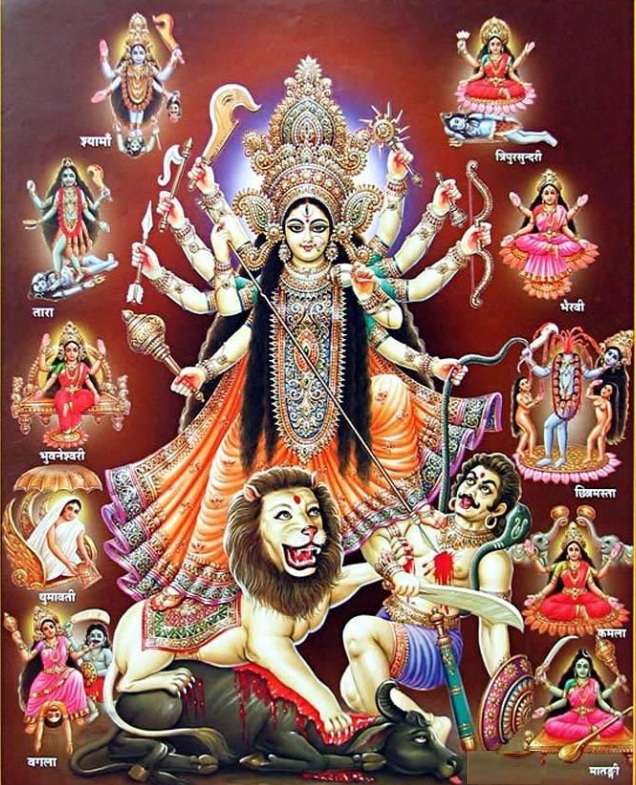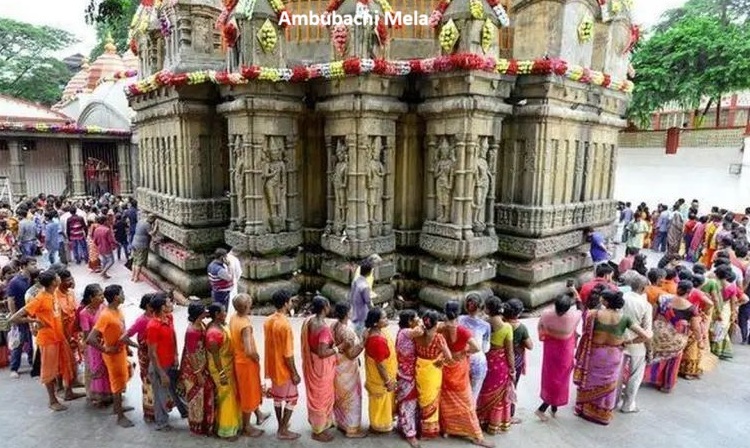Official Website : https://divinenewz.com/
Ashada or
Ashada or
Adi (Sanskrit: आषाढ) is a month of the Hindu calendar that corresponds to
June/July in the Gregorian calendar. In India’s national civil calendar, this month is the
fourth month of the year. In Hindu astrology,
Ashada begins with the
Sun’s entry into Gemini. It is the first of the two months that comprise the monsoon season.
The corresponding month in the Bengali calendar is the third month.
1. INTRODUCTION
The traditional
Hindu lunar calendar consists of
12 months, each named after a specific time period or season, and follows the lunar cycle. These months are:
Chaitra, Vaishakha, Jyeshtha, Ashadha, Shravana, Bhadrapada (or Bhadra), Ashvina, Kartik, Margashirsha, Pausha, Magha, and Phalguna.
The names of the
Punjabi Desi months
are:
Chet, Vaisakh, Jeth, Harh, Sawan, Bhadon, Assu, Katik, Maghar, Poh, Magh, and Phagan
– These months are lunar-based, so their exact dates shift each year in the Gregorian calendar.
– In Hindu tradition, months start from the day after the full moon or new moon, depending on whether it’s the Purnimanta or Amanta calendar system.
– Regions like North India and South India may observe month names slightly differently based on their local calendar systems.
2. WHAT IS ASHADA MONTH?
The Hindu calendar is rich with symbolic months, each imbued with celestial meaning, cultural traditions, and spiritual significance. One such profoundly revered month is Ashada, also spelled
Ashadha. Falling typically between June and July in the Gregorian calendar,
Ashada marks a transitional period between the
summer and the monsoon seasons in India.
Ashada is the
fourth month in the Hindu lunar calendar and plays a crucial role in
both religious and agricultural life. It is a
time of devotion, austerity, and preparation — both materially for the
agrarian community and
spiritually for seekers of inner transformation.
3. MEANING AND ORIGIN OF ASHADA MONTH
The term “Ashada” is derived from the Sanskrit word Āṣāḍha, referring to the nakshatra (lunar mansion) Purvashada, which is prominent during the full moon of this month.
Lunar Calendar Context
– In the
Amanta lunar calendar (followed in states like Maharashtra, Gujarat, and Andhra Pradesh),
Ashada begins the day after the
new moon (Amavasya).
– In the
Purnimanta system (used in
North India), it begins the day after the
full moon (Purnima).
This month usually overlaps with
June-July in the Gregorian calendar and is followed by
Shravana, another
spiritually potent month.
In the Hindu calendar,
Ashada month, also known as
Ashadha or Aadi, is a significant month in the Hindu calendar, particularly in
South India. While considered an
inauspicious time for major life events like
marriage, it holds
deep spiritual importance, especially for
worshipping the divine feminine. It is also linked to the
agricultural cycle, marking the start of the
monsoon rains and a time of
spiritual preparation for a bountiful harvest.
Month End : Thursday, 10 July 2025
Though dates may vary slightly based on regional Panchangs.
4. IMPORTANCE OF ASHADA CIVIL MONTH IN HINDU CULTURE
i)A Period of AusterityAshada is often viewed as a time for tapasya (penance), vratas (vows), and sadhana (spiritual practices). Many communities avoid new ventures like weddings, housewarming, or large-scale purchases during this time.
ii)Beginning of MonsoonAshada marks the arrival of monsoon rains, vital for Indian agriculture. Farmers begin sowing seeds, praying for a bountiful harvest, and expressing gratitude to nature through various rituals.
5. FESTIVALS CELEBRATED IN ASHADA MONTH
Ashada is filled with many religious observances, most of which revolve around devotion, fasting, and honoring deities. Here are some of the major festivals and their significance:
5. i)ASHADA GUPT NAVRATRI 2025
Ashada Gupt Navratri, observed in the Ashada month (June–July), is a period of deep spiritual practices, tantra sadhana, and secret worship of the Goddess in her fierce and mystical forms. Unlike the public celebrations of the main Navratris, Ashada Gupt Navratri is performed secretly (hence the word ‘Gupt’, meaning secret or hidden) and holds immense significance for tantric practitioners, yogis, and sadhaks.
i)Meaning of Gupt Navratri‘Gupt Navratri’ literally means “Secret Nine Nights”. It is a period of nine nights devoted to Goddess Durga and her nine shakti forms, but the rituals and practices are carried out in secrecy and silence, mostly by advanced spiritual seekers, tantriks, and yogis. The energy during these days is considered highly conducive for inner spiritual work, especially tantra sadhana.
There are two Gupt Navratris in a year:
–
Magha Gupt Navratri (January–February)
–
Ashada Gupt Navratri (June–July)
|
If You Need to Know More About Gupt Navratri- then read our article – WHAT IS GUPT NAVRATRI? |
b)When is Ashada Gupt Navratri Celebrated?
Ashada Gupt Navratri begins on the
Pratipada (first day) of the Shukla Paksha (waxing phase of the moon) in the month of
Ashada (June–July), and ends on
Navami, the ninth day. The exact dates vary each year depending on the lunar calendar.
In 2025, Ashada Gupt Navratri is expected to fall between
SIGNIFICANCE OF ASHADA GUPT NAVRATRI
i) Spiritual Importance
Ashada Gupt Navratri is considered especially beneficial for:
–
Tantric sadhanas
–
Shakti worship
–
Spiritual evolution
–
Removal of negative energies
–
Manifestation of spiritual and material desires
Unlike other festivals that are external and social, this is an inward journey into the deeper realms of consciousness.
This Navratri is of paramount importance to tantriks and spiritual practitioners. During these nine nights, practitioners perform sadhanas related to the Dasha Mahavidyas (ten powerful forms of the Goddess), such as Kali, Tara, Bagalamukhi, Tripura Sundari, etc., to attain siddhis (spiritual powers), liberation, and divine blessings.
iii) Time for Inner Cleansing
The intense divine vibrations make this period ideal for:
–
Meditation (Dhyan)
–
Chakra cleansing
–
Kundalini awakening
–
Detachment from worldly distractions
THE GODDESSES OF ASHADA GUPT NAVRATRI
Each day of Gupt Navratri is dedicated to a form of Maa Durga, but unlike regular Navratris, many devotees also focus on the Ten Mahavidyas, which are fierce, mystical forms of the Divine Feminine.

- Kali – Goddess of time and transformation
- Tara – The savior and guide
- Tripura Sundari – Goddess of supreme beauty and bliss
- Bhuvaneshwari – Queen of the universe
- Bhairavi – Fierce and transformative form
- Chhinnamasta – Self-sacrificing goddess
- Dhumavati – The widow goddess of detachment
- Bagalamukhi – Stunner of enemies and speech
- Matangi – Goddess of inner wisdom
- Kamala – Goddess of prosperity and abundance
Sadhaks choose specific Mahavidya depending on their path and goals during Ashada Gupt Navratri.
RITUALS AND PRACTICES OF ASHADA
i)Preparations Before Navratri
–
Cleanse the body and surroundings
–
Maintain purity in thoughts, speech, and actions
– Take a
sankalpa (vow) for your sadhana or purpose
–
Set up an altar with pictures or idols of chosen Devi
Each day typically involves:
– Early morning
bath and purification
–
Lighting of a ghee lamp
– Chanting of Durga Saptashati, Lalita Sahasranama, or Mahavidya stotras
– Offering
red flowers, fruits, sweets, incense, and camphor
–
Sankalpa and japa (mantra repetition)
–
Meditation and
dhyan
Some commonly performed sadhanas during Ashada Gupt Navratri include:
–
Kali Sadhana: For destruction of ego and fear
–
Bagalamukhi Sadhana: For legal victories and silencing enemies
–
Tara Sadhana: For liberation and higher wisdom
–
Tripura Sundari Sadhana: For beauty, bliss, and divine grace
Many devotees observe:
– Nirjala fast (without water)
–
Phalahar (fruits and milk)
–
One meal a day (saatvik bhojan)
BENEFITS OF OBSERVING ASHADA GUPT NAVRATRI
- Spiritual Growth : Sadhana performed during this period gives tenfold results, enhancing inner purity and divine connection.
- Karma Shuddhi: Helps cleanse accumulated karmas and allows the soul to advance spiritually.
- Material Benefits: Brings blessings for prosperity, health, and victory over difficulties.
- Material Benefits: Brings blessings for prosperity, health, and victory over difficulties.
- Tantric Powers: Advanced sadhaks may attain siddhis (powers), such as clarity of vision, telepathy, and healing capabilities.
- Divine Protection: Shields one from negative energies, black magic, and hidden enemies.
REGIONS AND COMMUNITIES CELEBRATING
While Gupt Navratri is lesser-known, it is still observed in various regions, including:
- Himachal Pradesh :Temples of Shakti Peethas hold special rituals.
- Kashi and Varanasi : Centers for tantric worship
- Assam and Bengal : Worship of Kali, Tara, and Bagalamukhi.
- Odisha and Tripura : Tribal and tantric forms of Devi worship
- Maharashtra and Madhya Pradesh : Private observances by tantric practitioners
MANTRAS AND STOTRAS
i) Important Mantras
Kali Beej Mantra:
– “Kreem Kreem Kreem Hum Hum Hreem Hreem Dakshina Kalike Kreem Kreem Phat”
Bagalamukhi Mantra:
– “Om Hleem Bagalamukhi Sarva Dushtanam Vacham Mukham Padam Stambhaya Jivhaam Keelaya Budheem Vinashaya Hleem Om Swaha”
Durga Gayatri:
– “Om Katyayanyaya Vidmahe Kanyakumari Dheemahi Tanno Durgi Prachodayat”
ASHADA GUPT NAVRATRI FOR THE MODERN SEEKER
In the fast-paced world, Ashada Gupt Navratri serves as a time for:
– Spiritual detox
– Reconnection with self
– Withdrawal from chaos
– Harnessing inner strength and intuition
You don’t need to be a tantrik or a yogi to benefit. Even simple devotion, regular mantra chanting, and meditation during these nine days can be transformative
Ashada Gupt Navratri is a sacred, mystical time that opens a powerful gateway for inner
transformation, divine communion, and realization of the Supreme Shakti. Though not popularly known or celebrated with grandeur, its impact is profound for those who approach it with sincerity and discipline.
It is a reminder that the
deepest truths of existence and divinity lie not in external celebrations but in the silence of the inner temple—within the heart of a devoted seeker. These nine nights are an opportunity to transcend limitations, burn away ignorance, and awaken the divine feminine energy that sustains all creation.
5. ii)ASHADA EKADASHI (DEVSHAYANI EKADASHI)
– Falls on the
11th day of the waxing moon (Shukla Paksha Ekadashi).
– Marks the beginning of
Chaturmas, a
four-month period during which Lord Vishnu is believed to go into a cosmic sleep (Yoga Nidra).
– Highly sacred to
Vaishnavites, especially in Maharashtra, where the
Pandharpur Wari Yatra culminates with over a million devotees walking to the
Vitthal-Rukmini temple.
–
Fasting and chanting of
Lord Vishnu’s name are practiced.
5. iii)GURU PURNIMA
– Falls on the
full moon of Ashada
– Celebrates the
Guru or spiritual teacher.
– Traditionally, disciples
honor their gurus
with offerings and gratitude.
– It also marks the first sermon of Lord Buddha after his enlightenment, making it important in Buddhism.
–
Vyasa Purnima is another name for this day, dedicated to Sage Veda Vyasa, who composed the Mahabharata and classified the Vedas.

5. iv)JAGANNATH RATH YATRA
– Though primarily a
festival of Odisha, the
Rath Yatra of Lord Jagannath also falls in Ashada.
– Celebrates the
Guru or spiritual teacher.
– Millions participate in pulling the chariots, signifying devotion and service to God.

5. v)ASHADA AMAVASYA
– The
new moon day of the month.
– Considered auspicious for performing
Shraddha and
Tarpana rituals for departed ancestors.
– Some people also worship their
Kula Devata (family deity) on this day.
5. vi)AMBUBACHI MELA
– Location: It is celebrated in
Kamakhya Temple, Assam
– : It celebrates the
Earth’s menstruation cycle and marks the
fertility of nature. The temple remains closed for three days and reopens on the fourth with special rituals.

5. vii)KOKILA VRAT
Observed by women for the well-being of their families and for a good husband, based on the mythological story of a cursed woman turning into a koel (nightingale).
6. RITUALS AND OBSERVANCES
- Fasting (Vrat): Devshayani Ekadashi and other Ekadashis of the month are considered powerful for fasting and attaining divine blessings.
- Charity and Punya: Donating clothes, food, and essentials to the needy, cows, and Brahmins is considered highly meritorious.
- Pujas and Havans: Special rituals and homams (fire offerings) are performed at temples and homes, especially invoking Lord Vishnu and Goddess Durga.
- Listening to Scriptures: Reading and listening to the Bhagavad Gita, Vishnu Sahasranama, and stories from Puranas are highly recommended.
- Disciplined Living: As Chaturmas begins, many devotees take vows such as avoiding non-vegetarian food, onion-garlic, or abstaining from certain pleasures.
-
Chaturmas Vratam Begins:
-
Sawan Preparation:
-
Guru Worship:
On Guru Purnima, disciples recite Guru Gita, chant mantras, perform padapuja (worship of the Guru’s feet), and engage in self-reflection. -
Vrat Katha and Storytelling:
7. SPIRITUAL SIGNIFICANCE OF ASHADA
-
Period of Introspection
Ashada is like the dark night before the dawn of Shravana. It is a time to turn inward, evaluate one’s life, purify the mind, and seek guidance from the divine and the Guru.
-
Sleep of Lord Vishnu
With Vishnu’s cosmic slumber starting in Ashada, devotees believe this is a time of spiritual pause, focusing on austerity, penance, and preparation rather than celebration.
-
Connection to Chaturmas
The Chaturmas period that begins in Ashada is ideal for sadhana, charity, and self-control. Saints remain stationary during this time and impart spiritual knowledge.
-
Time of Devotion and Withdrawal
Ashada is seen as a period of withdrawing from worldly pleasures and increasing devotion. Many saints and seekers undertake special sadhanas (spiritual practices) during this month.
-
Importance of the Goddess
Various forms of Goddess Shakti are worshipped in Ashada, especially during the Ashada Navratri. It is also the time of the Ambubachi Mela in Assam, celebrating the fertility of the Earth.
-
Commencement of Vedic Studies
In ancient times, Gurukuls resumed classes during this month after the summer break, making it an important time for the revival of knowledge.
8. REGIONAL OBSERVANCES OF ASHADA MONTH
Different regions of India observe Ashada in unique ways:
-
Maharashtra – Pandharpur Wari
– Devotees known as Warkaris march on foot to Pandharpur.
– Chanting of “Vitthal Vitthal” and singing Abhangas (devotional songs by saints like Tukaram and Dnyaneshwar).
-
Odisha – Rath Yatra
– Jagannath’s chariot festival dominates the Ashada celebrations here.
– Devotees believe that pulling the chariot leads to salvation.
-
South India
– Ashada is associated with Goddess Lakshmi and Aadi Perukku (in Tamil Nadu), a festival celebrating the river and fertility.
– In Karnataka and Andhra Pradesh, the month is observed with various vratas dedicated to Vishnu and the Guru.
-
North India
– The focus is on Guru Purnima, Ekadashi fasts, and temple worship.
– New ventures and weddings are postponed until the end of Ashada due to inauspicious beliefs.
9. DO’S AND DON’T’S IN ASHADA
Do’s
- Observe fasts on Ekadashi, Amavasya, and Purnima.
- Perform japa, dhyana, and puja daily.
- Give daan (donation) to Brahmins, cows, and the needy.
- Read sacred texts like Bhagavad Gita, Bhagavatam, or Ramayana.
- Spend time with your Guru or spiritual teacher.
- Avoid marriages, engagements, and new business launches.
- Avoid consumption of meat, alcohol, onions, and garlic.
- Avoid travel to holy places unless necessary.
- Avoid sleeping during the day or staying up excessively at night.
10. ASHADA AND THE GODDESS ENERGY (SHAKTI)
In certain traditions, especially in southern India, the
Divine Feminine is worshipped intensively during Ashada:
Aadi Month (Ashada in Tamil Nadu)
- Aadi Pooram, Aadi Krithigai, and Aadi Perukku are major festivals.
- Special pujas for Durga, Kali, and Amman are observed.
- Rivers are worshipped as divine mothers.
- Women observe fasts for marital prosperity.
11. AGRICULTURAL RELEVANCE OF ASHADA
As the monsoon season begins:
- Farmers begin planting rice, millets, and pulses.
- Agricultural festivals pray for good rainfall and healthy crop growth.
- Nature worship gains momentum with rituals dedicated to Varuna (rain god) and Bhumi Devi (earth goddess).
12. CONCLUSION
Ashada Month, though not as widely celebrated as Shravana or Kartika, holds deep spiritual and cultural value in Hindu tradition. It is a time of turning inward, reconnecting with the divine, and preparing for abundance—both material and spiritual. Through its festivals like Ashadi Ekadashi, Guru Purnima, and Rath Yatra, Ashada encourages devotion, discipline, and reflection.
In a world often moving too fast, Ashada month reminds us to pause, reflect, and listen to the inner voice of the Guru and God. Whether through fasting, pilgrimage, or silence, Ashada invites every soul on a journey toward self-purification and spiritual awakening.
12. WRAPPING UP
We hope this has tried to clear up some of the confusion about Ashada month. First of all, you will have to know about the meaning of Ashada, Navratri serves as a spiritual journey inward, invoking the divine feminine to cleanse our inner world and guide us towards righteousness, prosperity, and wisdom.
Ashada is often viewed as a time for tapasya (penance), vratas (vows), and sadhana (spiritual practices). Many communities avoid new ventures like weddings, housewarming, or large-scale purchases during this time. Ashada marks the arrival of monsoon rains, vital for Indian agriculture. Farmers begin sowing seeds, praying for a bountiful harvest, and expressing gratitude to nature through various rituals.
You still have any question, feel free to ask me via comments or via email.
Don`t forget to share what you like here on Youtube, Facebook, Instagram with your friends and family.
At DivineNewz, a spiritual and temples news related information providers, is working on the project to work for religion and information about the temples to share with you to bring new ideas about spiritual and religious world.
Get in touch with DivineNews by contacting by divinenewz6@gmail.com/ For more information, please visit:
https://www.divinenewz.com

ARTICLE WRITTEN BY:
Divinenewz is a firm Working very proficiently for sharing the divinely knowledge, darshan and pilgrim details and many more in spiritual field. If you have any unique temple and divine place around the globe, then contact us at divinewisdom0608@gmail.com, divinenewz6@gmail.com, or
For more information, please visit:
https://www.divinenewz.com

What are traditional month names?
The traditional Hindu lunar calendar consists of 12 months, each named after a specific time period or season, and follows the lunar cycle. These months are: Chaitra, Vaishakha, Jyeshtha, Ashadha, Shravana, Bhadrapada (or Bhadra), Ashvina, Kartik, Margashirsha, Pausha, Magha, and Phalguna.
What are punjabi traditional month names?
The names of the Punjabi Desi months are: Chet, Vaisakh, Jeth, Harh, Sawan, Bhadon, Assu, Katik, Maghar, Poh, Magh, and Phagan
What is ASHADA month?
In the Hindu calendar, Ashada month, also known as Ashadha or Aadi, is a significant month in the Hindu calendar, particularly in South India. While considered an inauspicious time for major life events like marriage, it holds deep spiritual importance, especially for worshipping the divine feminine. It is also linked to the agricultural cycle, marking the start of the monsoon rains and a time of spiritual preparation for a bountiful harvest.
What is Gupt Navratri?
‘Gupt Navratri’ literally means “Secret Nine Nights”. It is a period of nine nights devoted to Goddess Durga and her nine shakti forms, but the rituals and practices are carried out in secrecy and silence, mostly by advanced spiritual seekers, tantriks, and yogis. The energy during these days is considered highly conducive for inner spiritual work, especially tantra sadhana.
When is Ashada Gupt Navratri Celebrated?
Ashada Gupt Navratri begins on the Pratipada (first day) of the Shukla Paksha (waxing phase of the moon) in the month of Ashada (June–July), and ends on Navami, the ninth day. The exact dates vary each year depending on the lunar calendar.



One thought on “Ashada Civil Month 2025: Festivals, Rituals, and Significance in Hinduism”